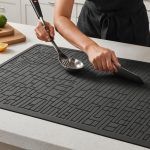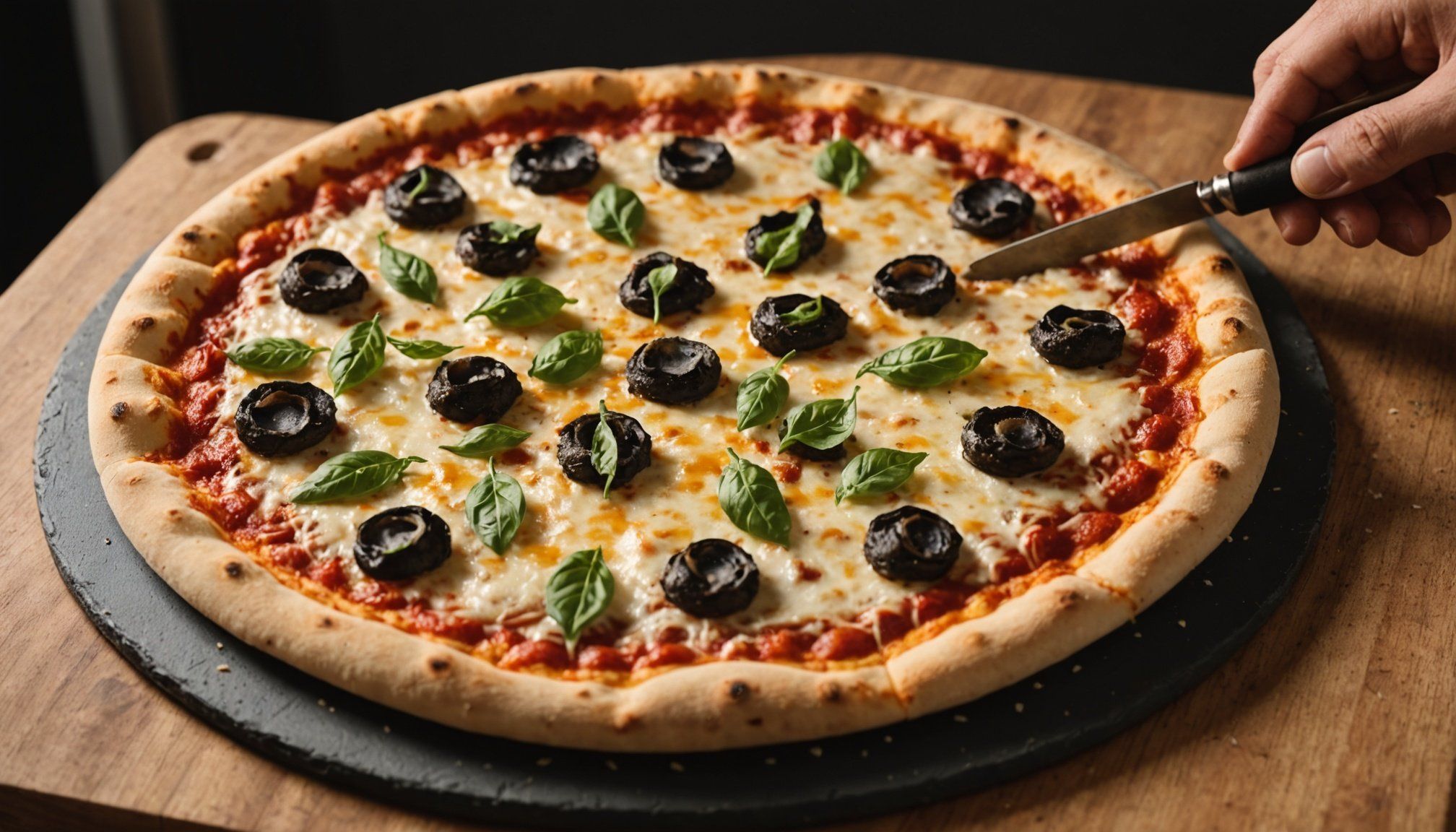Understanding Pizza Stones
Pizza stones, essential for creating authentic and crispy pizza crusts, serve as a tool that simulates the baking environment of a brick oven. At their core, these stones function by distributing heat evenly while absorbing excess moisture from the dough. As a result, they deliver a crispier base compared to traditional baking methods.
Pizza stones come in various materials, each offering unique benefits. Commonly used materials include ceramic, cordierite, and cast iron. Ceramic stones are affordable, providing excellent heat distribution; however, they are prone to cracking under high heat. Cordierite, conversely, is more durable and efficiently withstands thermal stress, making it a long-lasting choice. Cast iron stones heat up quickly and retain heat well but require special care to prevent rusting.
This might interest you : Ultimate guide to crafting homemade pasta: must-have tools and expert techniques for flawless noodles every time
The thickness of pizza stones also plays a pivotal role in heat retention. Thicker stones usually hold heat longer and offer more consistent cooking results, though they may require longer preheating times. In essence, a well-chosen pizza stone based on its material and thickness can dramatically improve home-baked pizza quality, making it a worthy investment for pizza enthusiasts.
Key Features of Pizza Stones
Exploring the features of pizza stones is crucial in understanding how they contribute to the perfect pizza crust. The core feature is heat retention, pivotal for achieving a crispy base. A pizza stone’s ability to maintain heat ensures that the crust cooks evenly, developing that sought-after crunch without burning. The stone absorbs heat efficiently, distributing it uniformly across the surface.
Also read : Essential oven thermometers for accurate cooking: achieve flawless temperatures every time!
When considering the ideal cooking surface characteristics, it’s essential to look for a stone surface that is smooth yet porous. This feature facilitates moisture absorption from the dough, reducing the risk of soggy bottoms and enhancing the texture.
Comparing various pizza stone features, such as material and thickness, reveals their impact on cooking outcomes. Cordierite stones, for instance, are lauded for their thermal endurance, while ceramic stones offer excellent heat distribution, although they may require gentler handling. Thickness also varies, influencing both heat retention and preheating duration. A thicker stone might demand more patience but pays off with consistent baking results.
By understanding these key features, pizza enthusiasts can better select a stone that meets their baking needs, paving the way for consistently delicious homemade pizzas.
Proper Usage Techniques
When exploring pizza stone usage, understanding the precise preheating process is fundamental for achieving optimal results. Begin by placing your pizza stone in a cold oven to prevent thermal shock. Gradually increase the temperature to around 475-500°F and allow it to heat for at least 30 minutes. This ensures the stone reaches its full potential for crispiness.
To prevent dough from sticking, baking tips are essential. Use a dusting of cornmeal or flour on the stone before laying the dough. This creates a barrier, allowing the pizza to slide smoothly upon removal. Consider using parchment paper for an easy transfer if you’re still uncertain.
For perfecting overall results, monitoring cooking times and temperatures is crucial. Every pizza is unique; therefore, adjust the cooking duration based on your toppings and dough thickness. Most pizzas bake in 8-12 minutes. Observe the crust’s colour and the cheese’s melt as indicators of doneness.
Experimenting with baking tips enables you to refine your technique, ensuring that every homemade pizza matches or surpasses your expectations. Mastering these techniques will elevate your pizza baking prowess, leading to consistently spectacular crusts.
Troubleshooting Common Issues
When tackling pizza stone troubleshooting, understanding common problems like soggy crusts is essential. A typical issue, soggy crusts, often stems from excess dough moisture. To remedy this, ensure your oven reaches a temperature of at least 475–500°F before baking. Precision in temperature prevents sogginess by enhancing the stone’s moisture-absorbing capabilities. Allowing sufficient preheating time is also crucial.
For those grappling with crust inconsistencies, monitoring dough thickness is key. Thinner doughs can lead to uneven cooking. In contrast, overly thick bases might not cook through properly. Adjust dough to achieve a balanced texture.
Maintaining and cleaning your pizza stone can significantly prolong its lifespan. Avoid using soap, which stones can absorb. Instead, clean with a damp cloth after scraping away residues. Regular seasoning with a light brush of oil can prevent food from sticking while also protecting the stone’s surface.
By applying these tips, you can improve crust texture and extend the life of your pizza stone, ensuring you consistently produce delectable pizzas. Addressing common issues with remedies will enhance your overall pizza-making experience, allowing you to enjoy perfectly crispy results every time.
User Experiences and Comparisons
Exploring the diverse user experiences with pizza stones provides insightful perspectives on their value and functionality. Many pizza enthusiasts adore the even heat distribution and crispier crusts that pizza stones offer. Enthusiastic reviews often praise the transformation in homemade pizza quality, emphasising ease of use and improved baking outcomes.
Comparing pizza stones reveals distinctions among budget-friendly and premium options. Budget stones, while more affordable and typically made from materials like ceramic, may lack the durability of their pricier counterparts. In contrast, premium stones tend to utilise materials such as cordierite, which withstand high temperatures and offer superior thermal retention over time. Cast iron options, though heavier and requiring special care against rust, also enjoy positive feedback for offering speedy heating times.
In terms of recommendations, users frequently suggest matching the pizza stone choice with specific cooking styles. For instance, heavy pizza makers might favour cordierite for its resilience, whereas occasional bakers might find ceramic sufficient for their needs. By understanding user insights and comparative analysis, selecting the right pizza stone can elevate your pizza-making adventures significantly, leading to delightful culinary experiences.











